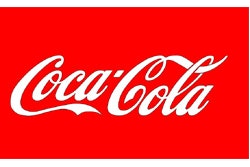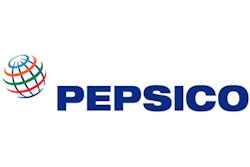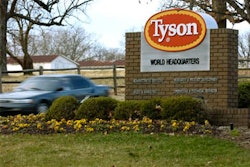What is cold chain? Cold chain refers to the management of temperature-sensitive products as they move through the supply chain. Especially important for the pharmaceutical industry, this subject now gets a lot of attention. If drug quality is compromised by exposure to inappropriate conditions during transport and storage, drug consumers may suffer adverse consequences.
Three Reasons You Care about Cold Chain
In addition to the overall goal of patient safety, there are three major reasons to pay attention to cold chain issues. First, there is increasing regulatory scrutiny. During an inspection you need to be able to answer the usual quality-focused questions about your cold chain integrity: “How do you know? Can you prove it?” Anyone compliant with GxP who manages any link in the supply chain needs to be prepared for these questions.
Second, there are more biopharmaceutical products coming onto the market all the time. By some estimates, 50 percent of the entire drug market will be biologics by 2015.These drugs tend to be more sensitive to environmental conditions and therefore require more care as they move through the supply chain. You should be aware of this if you handle these types of products.
Finally, there is a new focus on drugs that must be kept at controlled room temperature (CRT). This is usually defined as 20 to 25°C with allowable excursion between 15 and 30° as long as the mean kinetic temperature remains in the defined range. (Refer to USP 1079 for more information on CRT). Drugs in this category are typically less sensitive to environmental conditions, but when storage temperatures are defined, it is reasonable to ask if they have actually been maintained properly.
Stakeholders: Regulators and Suppliers
The cold chain regulatory landscape is complicated these days. There are more than 30 good distribution practice (GDP) documents from various organizations in multiple countries, and they are not all the same. Currently, an incomplete list of regulatory and guidance stakeholders includes:
The EU Guide to Good Manufacturing Practice, Annex 13
- The Guidelines on Good Distribution Practice (GDP) of Medicinal Products
- CDC Guidelines for Maintaining and Managing the Vaccine Cold Chain
- WHO Guidelines on the international packaging and shipping of vaccines
- PDA Technical Report 49
- The US Code of Federal Regulations
- US and European Pharmacopoeia
- The International Committee for Harmonization (ICH) is attempting to harmonize key documents, but this process might take some time.
Also in the landscape are the many solution providers clamoring for position. The concept of “temperature management through the supply chain” is broad, as are the offerings from different solution providers. On the simple end of the spectrum, there are temperature data loggers; discrete devices that can be packaged with a shipment. They provide a temperature record of whatever they are measuring. These devices are usually started at the beginning of a shipment, stopped at the end, and uploaded manually to a PC to provide a time and temperature history of the transport duration.
There are more complex data loggers that can measure temperature, humidity, shock, vibration, and other parameters. They may have GPS capability and even the possibility of real-time tracking and reporting. Some communicate via RFID to simplify the gathering of information. There are also software solutions available to capture and track all of the information from the data loggers. These are usually proprietary to the device’s provider and designed to work with specific data loggers, but not compatible with others.
There are also packaging providers with a variety of package-based temperature control solutions. Some packaging is completely passive and custom-designed for a specific application. There are also active containers that can heat and/or cool the drug product as necessary. Some active containers are specifically designed to fit the mode of transport, such as airplanes. These containers may or may not include environmental recording devices; however, they usually do.
Finally, there are third party logistics providers (3PLs). These firms allow you to outsource some or all of your supply chain activity, including environmental control and monitoring. Some 3PLs are very large companies with huge investments to provide global supply chain solutions. Some are smaller companies that can organize your supply chain for you, using a variety of resources as necessary and complying with all applicable regulations. There are firms that can map your transportation routes and the storage areas within the vehicles that travel these routes. As already mentioned here, the market for cold chain solutions is growing rapidly and the 3PLs are prepared for this.
Steps to Navigating the Cold Chain Landscape
If you are feeling bewildered by all of this, here are some things you can do to get started:
1. Understand your current supply chain. Map it out so that you know where your facility and/or process is in the context of a product’s entire supply chain. That means understanding other stakeholders that are in a product’s cold chain with you. Build relationships that allow you to see the big picture and collaborate.
2. Consider where your supply chain is going. If your geographic scope is currently limited and you have made your decisions accordingly, you may have to re-think everything if your geographic reach expands.
3. Determine whether you need simple solutions (use of discrete data loggers) or more complex solutions (GPS-enabled measurements with real time reporting 24/7). This will require consultation with other people in your company and other parties in a product’s supply chain.
4. Prepare to validate whatever it is you decide to implement. Current regulatory scrutiny expects a qualified cold chain.
5. Be willing to reach out to solution providers. They may have more expertise in cold chain than you and your organization. Seek guidance from the outset to save the trouble of having to fix a broken system later on.
Items 1 thru 5 are interactive and, of course, other factors will come into play; operational efficiency, quality system structure, and budget are only a few of the elements that will define how you construct a cold chain management system. But fear not, there is a growing community of cold chain experts and organizations out there to help. Here are some starting places:
The Parenteral Drug Association - www.pda.org
Global Cold Chain Alliance - www.gcca.org
International Safe Transit Association - www.ista.org
International Society for Pharmaceutical Engineering - www.ispe.org
For more information, please visit www.vaisala.com.























